FOG
Well-known member
- May 11, 2021
- 1,882
- 2,313
CBM put a freeze plug with a hole when they rebuilt my motor years ago. Handed me some steam port plugs and told me how to burp it. Runs at 180 and I have not had any issues.
Follow along with the video below to see how to install our site as a web app on your home screen.
Note: This feature may not be available in some browsers.
yes that is the guy.Ya I think I'm going to get rid of the bypass. I think my steam holes have a hard line on them. I've thought about pulling it before when I was trying to fill but didn't want to mess with it because it runs under the throttle body but now that you mention it maybe I should check to make sure they're not blocked. Red circle is the steam hole you're talking about, right?
View attachment 28264
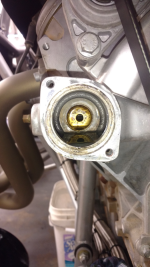
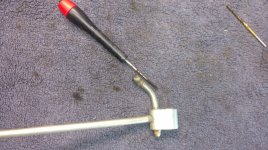
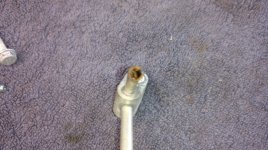
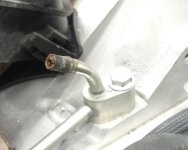
When you run a heater core there is a valve that stop flow through it. When the valve is open the coolant flows through the core, effectively cooling it, then to the back of the water pump to be push through the engine.By The Way - that little U hose on the water pump is not needed - but it does not hurt - when you run a Heater core it does the same thing - I just think its fast and clean to tap and plug them with Pipe plugs as @J Alper said - I have never done anything differently
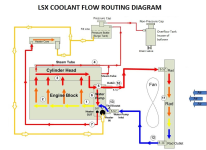

When you run a heater core there is a valve that stop flow through it. When the valve is open the coolant flows through the core, effectively cooling it, then to the back of the water pump to be push through the engine.
How is the U not hot coolant out of the heads right back into the inlet of the water pump?
Its true - in most cases the heater control valve is closed unless the heater or defroster is on, and heater core is a small radiator .... In my younger years all my "hot rods" had a stock radiator and lots of HP and we always ran around with the heat on full blast to cool the car ;-)as you ( @Fullthrottleguy) mentioned, the intricacies of an LS cooling system are kind of complex, but it looks to me like if you put that jumper from the heater core nipples, it would remove a significant amount of water from the path that goes through the radiator. it would be similar to drilling a 3/4" in hole in the freeze plug (the 1/4" hole and the 5/8" hose).
I realize that it does that in a car, but in a car it has a good bit of tubing, and the heater core to limit the water flow and the heater core will remove heat, so its in essence going through a radiator.
View attachment 28271
Im guessing it depends on the rest of the system. Im willing to bet that on my car it would not matter. my radiator sits quite a bit higher than the motor, the filler neck is the highest point by a lot. my motor has the steam tubes on the top of the heads, on the high side (the clutch side sits quite a bit lower than the WP side). the steam tubes go back to the water pump so there is a place for the air to goto.I’m confused a tad. And I’m not very well versed on the ls. Does that redline plug need to have holes drilled? To me it looks like it will plug the hole.
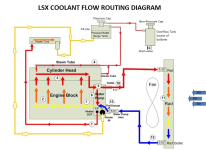
No. Install it and that’s it.I’m confused a tad. And I’m not very well versed on the ls. Does that redline plug need to have holes drilled? To me it looks like it will plug the hole.
You would not put steam port hoses in your overflow UNLESS it is pressurized like the GM car the engine came out of. If it's a simple burp type tank putting steam port hoses would vent all the pressure in the system. Thus, making it more likely to boil the coolant.It make sense to me that they would go to the head space in the surge tank or into the radiator (which Ive seen before), but being in buggies, that is not always practical. Hell my buggy did not have an overflow tank when I got it. what was done on my buggy seems to make sense to me the lower 2 steam holes are plugged (the Clutch end) & the higher 2 holes (the water pump end) are connected together & then a hose goes to the water pump. I did not look @ it in a lot of detail, but I assumed it went into the pump so it would get pushed into the radiator to settle out the bubbles.
Agreed, which is why I put "surge tank" in the text, rather than "overflow tank", so it matched the picture.You would not put steam port hoses in your overflow UNLESS it is pressurized like the GM car the engine came out of. If it's a simple burp type tank putting steam port hoses would vent all the pressure in the system. Thus, making it more likely to boil the coolant.
yes. They do make restrictor plates you can buy from Summit. 3 or 4 different hole diameters that work with the stock gasket. Or, just pull the guys ot of the thermostat and keep the plate.For the guys running a freeze plug, do you gut the internals on the thermostat so you still have the O ring seal?


